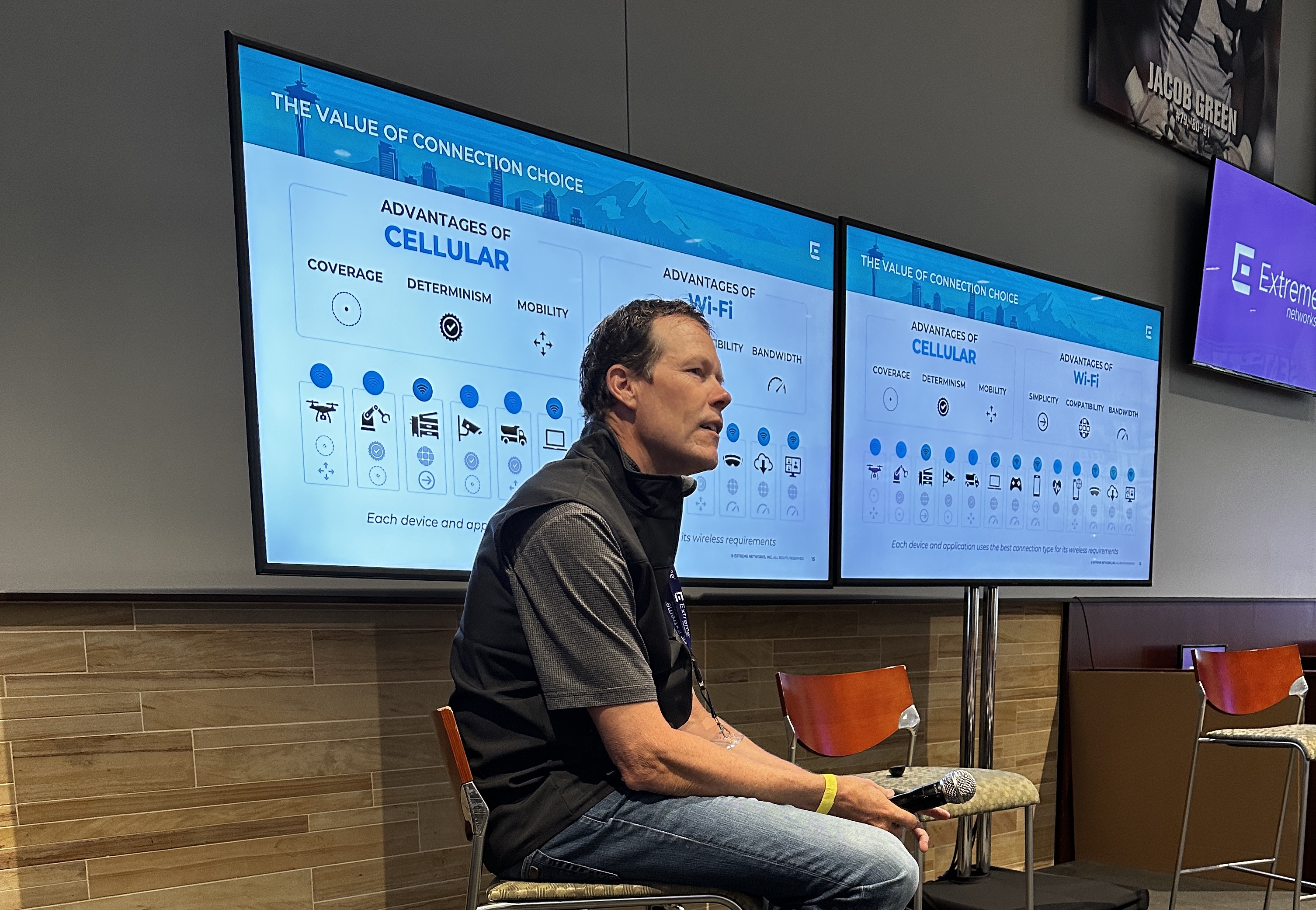 CLOUD
CLOUD
 CLOUD
CLOUD
 CLOUD
CLOUD
Earlier this month I attended the Major League Baseball All-Star Game in Seattle, home of the Mariners. As part of my activities there, I moderated a sports CIO summit hosted by Extreme Networks Inc., MLB’s official Wi-Fi solution provider, at Lumen Field, home of the Seattle Seahawks.
This was a great venue because the team has been a leader in technology innovation since Chip Suttles joined the team as its chief information officer. Lumen was the first NFL venue to open a food and beverage store powered by Amazon’s “Just Walk Out” solution. In attendance were about 30 CIOs, primarily MLB, but the audience also included attendees from the National Hockey League, the National Football League and the hospitality industry. The topics of conversation varied from staffing to digital transformation to global supply chain issues. Many of the “lessons learned” applied more broadly to other industries.
The unique thing about sports and entertainment is that it’s somewhat a microcosm of all industries. Sports venues include point-of-sale for retail, a transient population, medical services, emergency services, information sharing and other services found in other industries. Because of this, the challenges a sports CIO faces are not any different than what one might find in retail, manufacturing, education or other industry. To kick off the summit, we did an informal poll asking the CIOs what their top three challenges were and gave them seven to choose from.
The results were ranked as follows:
Given that Extreme Networks sponsored the event, much of the discussion turned to the network’s role in many of those topics. The network plays a crucial role in solving business challenges. I recently ran my own survey to investigate the role of the network in supporting critical business objectives. Here’s a handful of data points:
Much of the discussion revolved around the importance of Wi-Fi in customer experience. There’s the obvious “Good connectivity leads to good experiences,” as everything in MLB is now mobile. Fans enter using digital tickets, look up stats on their phone, order food from their seats, and then pay using their phone and continually post pictures on social media and message their friends. The mobile phone has now become an essential part of the fan experience.
For the MLB CIOs, the Wi-FI data is critical in understanding how to improve the fan experience continually. A simple example is knowing how fans move around the stadium. By tracking Wi-Fi data, the team can understand congestion points and which concessions have long lines and then use the data to reallocate resources to improve the in-stadium experience.
The Wi-Fi data can also reveal what kinds of activities fans are engaged with on their mobile device. For example, Extreme issued this press release, post-event highlighting just under 155,000 unique clients attached to the network for the week, what moments drove the most engagement, and which social applications were used. MLB and the Mariners can use this type of data to understand which channels to push advertising to.
One interesting point that did come up was the 5G-Wi-Fi debate. Although 5G is a viable, sometimes preferred option for fans, the data generated by telco-based services is invisible to the team. Some of the CIOs echoed their frustration with the telcos’ inability to provide the same level of granular data as they get from the Wi-Fi network. This is a business opportunity the telcos should capitalize on but to date have not.
One of the topics that came up is how to convince team ownership that a network upgrade, or other information technology modernization project, is needed. This is something all IT leaders in all industries face. During his portion of the presentations, Bill Schlough (pictured), CIO of the San Francisco Giants, which just deployed Extreme’s Wi-Fi 6E across Oracle Park, gave these four lessons learned from his upgrade:
Regardless of your industry, your challenges are not dissimilar to those of your peers in other verticals. In a hybrid-work, cloud-driven, mobile world, we are all dependent on the network to run the business. In particular, Wi-Fi plays an increasingly important role in employee and customer experience and business operations. The lessons learned from your sports peers can go a long way in helping your modernization project succeed.
Zeus Kerravala is a principal analyst at ZK Research, a division of Kerravala Consulting. He wrote this article for SiliconANGLE.
Support our mission to keep content open and free by engaging with theCUBE community. Join theCUBE’s Alumni Trust Network, where technology leaders connect, share intelligence and create opportunities.
Founded by tech visionaries John Furrier and Dave Vellante, SiliconANGLE Media has built a dynamic ecosystem of industry-leading digital media brands that reach 15+ million elite tech professionals. Our new proprietary theCUBE AI Video Cloud is breaking ground in audience interaction, leveraging theCUBEai.com neural network to help technology companies make data-driven decisions and stay at the forefront of industry conversations.